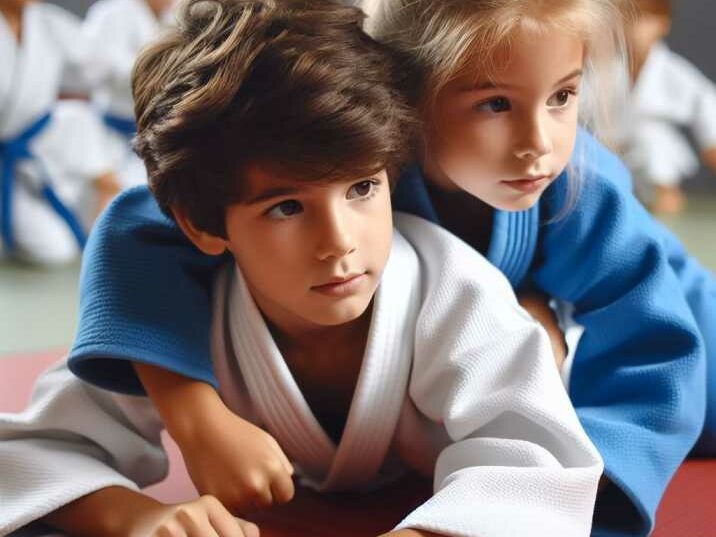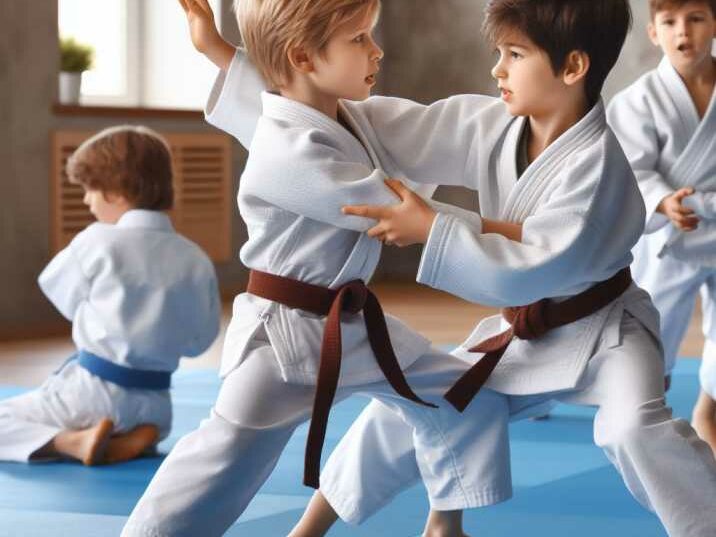Introduction:
Table of Contents
In this article, we delve into the exciting world of Judo Kids, offering parents a comprehensive guide to understanding this martial art form tailored for children. From its origins to its benefits and techniques, this piece aims to provide valuable insights into why Judo Kids is gaining popularity among families across the United States.

What are Judo Kids?
Judo Kids is a modified version of traditional Judo, specially designed to cater to children’s physical and mental development. Originating in Japan in the late 19th century, Judo emphasizes throws and grappling techniques to overcome opponents. However, Judo Kids focuses more on the fundamental principles of Judo while ensuring a safe and enjoyable experience for young practitioners.
Benefits of Judo Kids
Physical Fitness:
Participating in Judo Kids helps children improve their strength, flexibility, and coordination. Through various drills and exercises, young practitioners develop better motor skills and overall fitness levels.
Discipline and Respect:
Central to Judo philosophy is the concept of mutual respect and discipline. Children learn to respect their instructors, peers, and the rules of the sport, instilling valuable life lessons that extend beyond the dojo (training hall).
Self-Confidence:
As children progress in their Judo Kids journey, they gain confidence in their abilities. Mastering techniques and overcoming challenges boosts self-esteem and fosters a positive self-image.
Focus and Concentration:
Judo requires intense focus and concentration, qualities that are essential for success both on and off the mat. Through practice, children learn to tune out distractions and channel their energy effectively.
Conflict Resolution:
In Judo, practitioners learn how to resolve conflicts peacefully and assertively. Rather than resorting to aggression, children are taught to use technique and strategy to overcome opponents, promoting a non-violent approach to conflict resolution.
Techniques in Judo Kids
Ukemi (Breakfalls):
One of the first skills taught in Judo Kids is how to perform breakfalls safely. Learning to fall correctly minimizes the risk of injury during training and competitions.
Throws and Takedowns:
Judo Kids practice a variety of throwing techniques designed to off-balance and immobilize opponents. These techniques emphasize leverage and timing rather than brute strength, making them suitable for children of all ages and sizes.

Pins and Holds:
Children learn how to control and restrain opponents on the ground using pins and holds. These techniques teach patience and strategy, as practitioners work to maintain control while awaiting an opportunity to transition into a submission or escape.
Submissions and Joint Locks:
While safety is paramount in Judo Kids, children are introduced to basic submissions and joint locks under careful supervision. These techniques teach respect for opponents’ physical boundaries and the importance of tapping out when caught in a submission hold.
Randori (Free Practice):
Randori sessions allow children to apply their skills in a controlled sparring environment. Here, they can test their techniques against resisting opponents, honing their reflexes and tactical awareness.
Parental Involvement:
Parents play a crucial role in supporting their children’s Judo Kids journey. By attending classes, encouraging practice at home, and providing positive reinforcement, parents help foster a love for the sport and contribute to their child’s success.
Belt System:
Similar to traditional Judo, Judo Kids often employs a belt system to signify a practitioner’s skill level. As children progress in their training, they have the opportunity to earn colored belts, marking their advancement and achievements.
Competition Opportunities:
While competition is not mandatory in Judo Kids, many clubs offer opportunities for children to participate in friendly tournaments and events. These experiences allow children to test their skills in a supportive environment and build camaraderie with fellow practitioners.
Inclusivity:
Judo Kids welcomes children of all abilities and backgrounds. Whether a child is athletic or more reserved, Judo Kids provides a welcoming and inclusive space for growth and development.
Qualified Instructors:
Qualified instructors with experience working with children lead Judo Kids classes. These instructors not only teach proper techniques but also prioritize safety, fun, and character development in their approach to teaching.
Life Skills:
Beyond physical fitness and technical proficiency, Judo Kids instills valuable life skills such as perseverance, teamwork, and sportsmanship. These skills serve children well both on and off the mat, contributing to their overall personal growth and success.
Social Benefits:
Participating in Judo Kids exposes children to a diverse group of peers, fostering friendships and social skills. Through teamwork and mutual respect, children learn the importance of cooperation and empathy, skills that are essential for navigating social interactions in various contexts.
Gradual Progression:
Judo Kids classes are structured to accommodate children’s developmental stages, allowing for gradual progression and skill acquisition. As children master basic techniques, they are introduced to more advanced concepts, keeping them challenged and engaged in their practice.
Safety Measures:
Safety is paramount in Judo Kids, with instructors implementing strict safety protocols to minimize the risk of injury. Equipment such as mats and appropriate protective gear are used to create a safe training environment for children.
Long-Term Benefits:
Engaging in Judo Kids can have lasting benefits that extend well into adulthood. By instilling a love for physical activity, discipline, and lifelong learning, Judo Kids sets children on a path toward a healthy and fulfilling lifestyle.
Table of Information
| Topic | Details |
|---|---|
| Origins of Judo for chidren | Originated in Japan in the late 19th century as a modified form of Judo for children. |
| Benefits | Physical fitness, discipline, self-confidence, focus, conflict resolution. |
| Techniques | Breakfalls, throws, pins and holds, submissions, randori. |
| FAQs | Answers to common questions about Judo Kids. |
Conclusion:
In conclusion, Judo for Kids offers a unique blend of physical activity, mental discipline, and character development for children of all ages. By engaging in this enriching martial art, young practitioners not only improve their fitness and self-defense skills but also cultivate essential life skills that serve them well into adulthood. Whether your child is looking to boost their confidence, make new friends, or simply have fun, Judo Kids provides a welcoming and supportive environment for growth and exploration.
FAQs (Frequently Asked Questions)
1. What age can children start Judo for Children?
Children as young as 5 or 6 years old can begin learning Judo for Children, although some clubs may offer classes for even younger children.
2. Is Judo for Kids safe for children?
Yes, Judo for Kids is designed to be safe for children, with instructors prioritizing proper technique and supervision to minimize the risk of injury.
3. Do children need any prior experience to join Judo for Kids?
No prior experience is necessary to join Judo for Kids. Beginners are welcome, and instructors will tailor instruction to accommodate each child’s skill level.
4. How often do children typically attend Judo for Kids classes?
The frequency of Judo for Kids classes can vary depending on the club and individual preferences. Some children attend classes once or twice a week, while others may train more frequently.
5. Can girls participate in Judo for Kids?
Absolutely! Judo Kids is open to children of all genders, and many clubs actively encourage girls to participate and excel in the sport.


